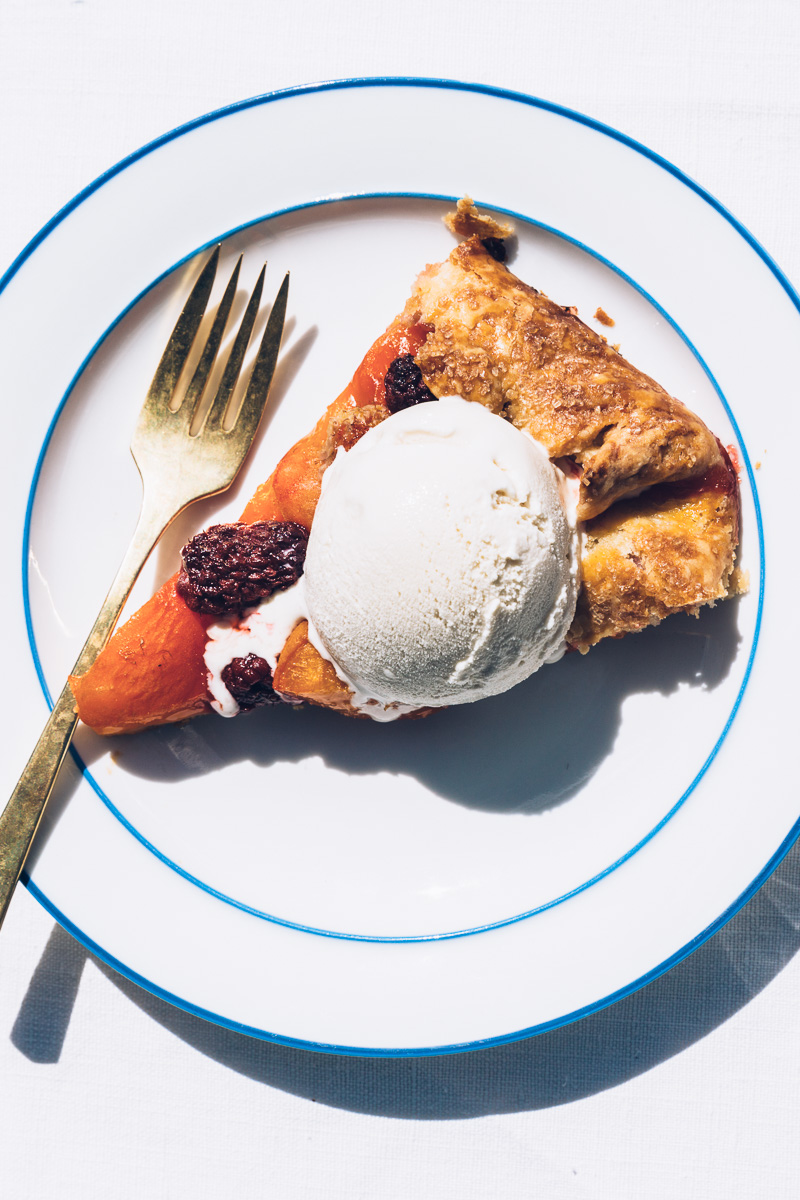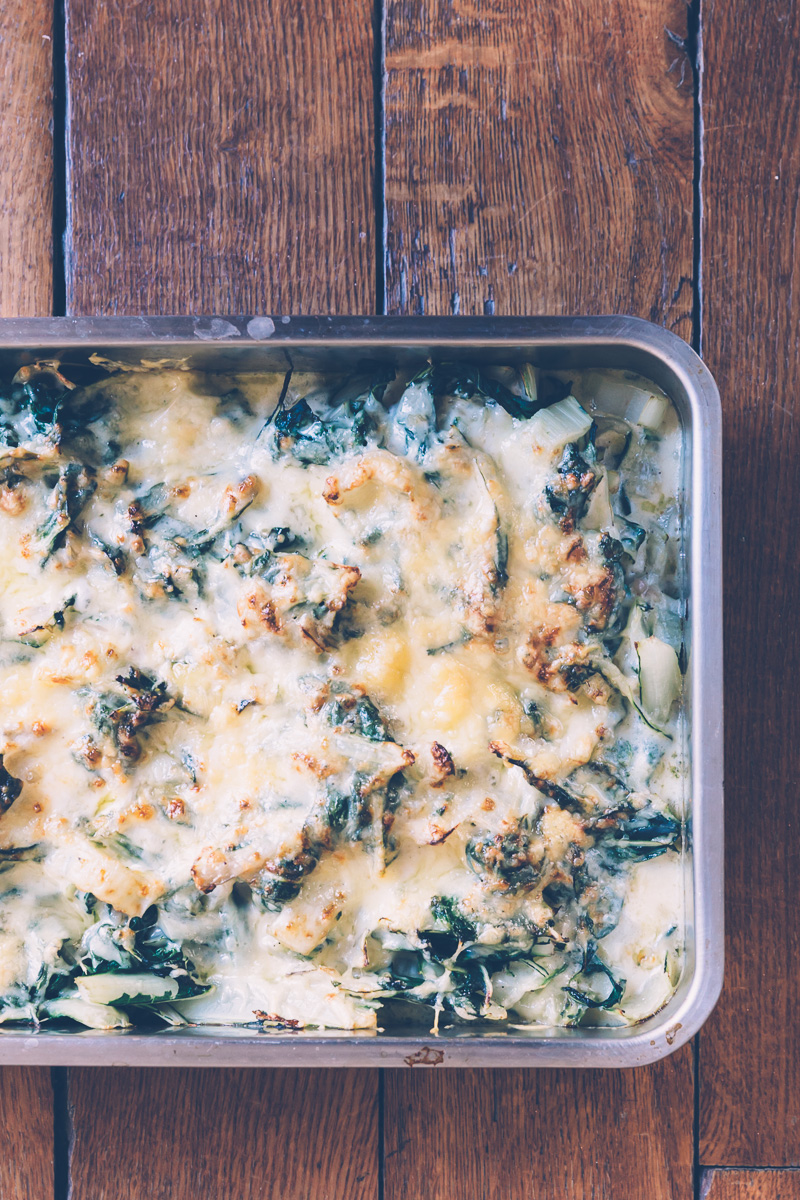A few weeks ago, I threw together this salad with my haul from the farmers market. I wasn’t aiming for anything in particular as I grabbed ingredients from the fridge, just a quick supper. But as it came together, I realized I had made a sort of a Pacific Northwest version of a Niçoise salad.
After I made the salad again a couple weeks later, my thoughts turned to the many little ways I’ve managed to weave pieces of my travels to France into my Seattle life.
Unlike the many books out there suggesting you can transform yourself into a Parisienne overnight with a little red lipstick and a few glasses of heart-healthy red wine, I don’t think the French mystique can be exported wholecloth to the other side of the globe. Let’s be honest, most Americans are not ready for 5 sinful weeks of paid vacation or multiple glasses of wine over lunch on a Tuesday.
Though it would be challenging, ridiculous even, to go full-on French here in the U.S. of A., I happen to think there’s a lot to be gained by folding cherished bits of another country’s way of life into our own. So I sat down and made a list of some of the Paris-inspired habits that have improved my life:
First up is walking. Seattle is not a particularly walkable city. It’s easy to get in your car for every little trip. In Paris, you walk. Once I started going everywhere on foot in Paris, I realized that those walks around the city gave rise to my best thinking. They created a space to disconnect and unfurl my thoughts in a way I can’t behind the wheel of a car or crammed against a stranger in the Metro. Now I walk everywhere I can. It’s helped me drop a dress size (while still eating croissants and cream puffs on my tours), shake stress more easily and come up with better ideas than I would otherwise. I've decided walking is one of the best (and easiest) things I can do for my body and my mind.
Next, is the very French art of making yourself feel beautiful. It is no secret that Parisians don’t run around grocery shopping or dropping their kids at school in their sweats. In Paris, when you leave the house, you dress like an adult, preferably an attractive one.
Before traveling to Paris often, I was a bit more--shall we say, lackadaisical--in my get-out-the-door routine. Especially since, as someone who works from home, I don’t actually need to get out the door most days. But all-day pajama parties are a thing of the past! I may not be pulling on my sexiest heels for a trip to the butcher (though don’t put it past me), I have discovered that I feel more confident, competent and beautiful when I take the time to wear clothes I love, brush on a coat of mascara and apply a hint of my favorite perfume.
On a related note, I’ve decided to prioritize skincare over makeup. For the most part, French people have gorgeous skin. I have developed an elaborate, Beautiful-Mind sort of theory as to why this is the case. But the short version is that they seem less stressed than Americans and they learn to care for their skin at an early age. (It's a thing. If you have a French friend, ask them at what age their mother introduced them to a formal skin-care regime!)
Having not been born into a culture that teaches its youth how to cultivate glowing skin, I've had to hack my own quasi-French skincare routine. It involves some fancy-sounding French cleansers and creams--and even a dramatic spritz of thermal water! But it works. My skin has never looked better, which means I spend almost no money on makeup and still get to feel like a total babe.
Parisians are also great at turning a few stellar ingredients into an amazingly satisfying meal. I’m talking a plate of creamy burrata, fruity olive oil, some aged ham and a handful of Sicilian almonds. Or maybe a pint of perfectly ripe cherry tomatoes tossed with olive oil, feta and dill spooned over a slice of toast or a pan-seared lamb chop. Or, a personal favorite: a whole steamed artichoke accompanied by a bright, lemony aioli. You get the idea--delicious, sophisticated flavors that come together in a flash. I’ve made it my mission to master this kind of weeknight dinner sorcery and I think you should, too. It’s creative, delicious and way more satisfying than grabbing take-out.
This one has been the biggest game-changer for me: Sitting down at the table for all meals. No phones. No TV. No scarfing a burrito over the kitchen sink or shoveling a sandwich into my face while I drive.
Eating a meal undistracted allows you to slow down and fully taste what’s going in your mouth. I’m not going to lie, sometimes it’s a pain in the ass; I want to grab something quick and run out the door. Or answer emails over lunch. But I am amazed at how much more delicious food has become since I started eating this way! The bonus side effect is that I need less food to feel satisfied. (Why has it taken me so long to figure this out?!?)
Last, and most certainly not least, is wine. Yup. Wine. Before Paris became a regular part of my life, I was more of a weekend drinker: maybe a cocktail with friends before dinner or glass of wine if we had a bottle on hand. Now we always have a bottle on hand! Not that we’ve turned into great lushes. But I’ve fallen in love with some of the natural wines I first tasted in France. And there's something magical about how a glass of wine with dinner serves as a marker of sorts, a signal that the work day is done and that things can become a touch looser, more fun. With friends, the best conversation always seems to start after a bottle of wine has been opened and everyone’s feeling buzzy and bright and a little more open than usual. (And then of course there's that whole heart-healthy thing.) So when it comes to pouring myself a glass or two, I'm most definitely a convert.
There you have it, friends: Some of the things Paris has taught me about how to live a beautiful life. I hope this list encourages you to work the most inspiring elements from your own travels into your everyday life. Drop me a line in the comments below if you do--I’d love to hear what habits you're making your own!
XO,
Olaiya
To experience the best of Paris for yourself, join my September Paris Revelry culinary & culture tour! There are still 2 spots left. Click here to grab yours!
Northwest Niçoise Salad
- 4 large eggs
- 2 tablespoons minced shallot
- 2 teaspoons dijon mustard
- 3 tablespoons red wine vinegar
- Sea salt and freshly-ground black pepper
- ½ cup olive oil
- 1 lb. young wax beans (or green beans), stems removed
- 1 cup shelled English peas (from 1 pound unshelled peas) or thawed frozen peas
- 6 breakfast radishes, shaved lengthwise
- 1 cup cherry or other small tomatoes, halved
- 1 tablespoon mint, cut into chiffonade (thin strips)
- 3 tablespoons whole cilantro leaves
- 8 oz hot smoked wild salmon, broken into bite-size pieces
*Notes: If peas aren't your thing, try subbing in shelled fava beans or cooked chickpeas.
- The vegetables (except tomatoes), eggs and vinaigrette can all be prepped up to 2 days before serving. Store covered in the fridge and bring to room temperature before assembling the salad.
Heat enough water to cover the egg in a small saucepan over high heat. When the water comes to the boil, add the eggs and cook for 10 minutes. Pour off the hot water and run cold water over the eggs until they are cool to the touch. Peel, halve and set aside.
On a separate burner, fill a large saucepan ⅔ full with water. Salt generously (it should taste like the ocean) and bring to the boil over high heat. (You’ll use this to blanch your vegetables in a moment.)
While the eggs are cooking, make the vinaigrette. In a medium bowl, combine the shallot, mustard, vinegar, a generous pinch of salt and several grinds of black pepper. Gradually whisk in the olive oil. Adjust seasonings and set aside.
When the salted water has come to a rolling boil, add the fresh peas and cook for about 1 minute (no need to blanch if you're using thawed frozen peas). Remove with a slotted spoon or spider to a small bowl and cover with ice water. Add the beans to the pot and cook to your desired doneness (I like mine to remain a little snappy). When done, transfer the beans to a medium bowl and cove with ice water. When completely cool, pour off the water and dry the peas and beans well.
To assemble the salad, place the beans, peas, radishes, tomatoes, herbs and salmon in a large bowl along with the herbs. Salt lightly and toss with some of the vinaigrette. Add more vinaigrette to taste. Transfer to a serving platter or individual plates and arrange the eggs over the salad. Salt the eggs and pour a bit of the vinaigrette over them just before serving.
Makes 4 servings.
























